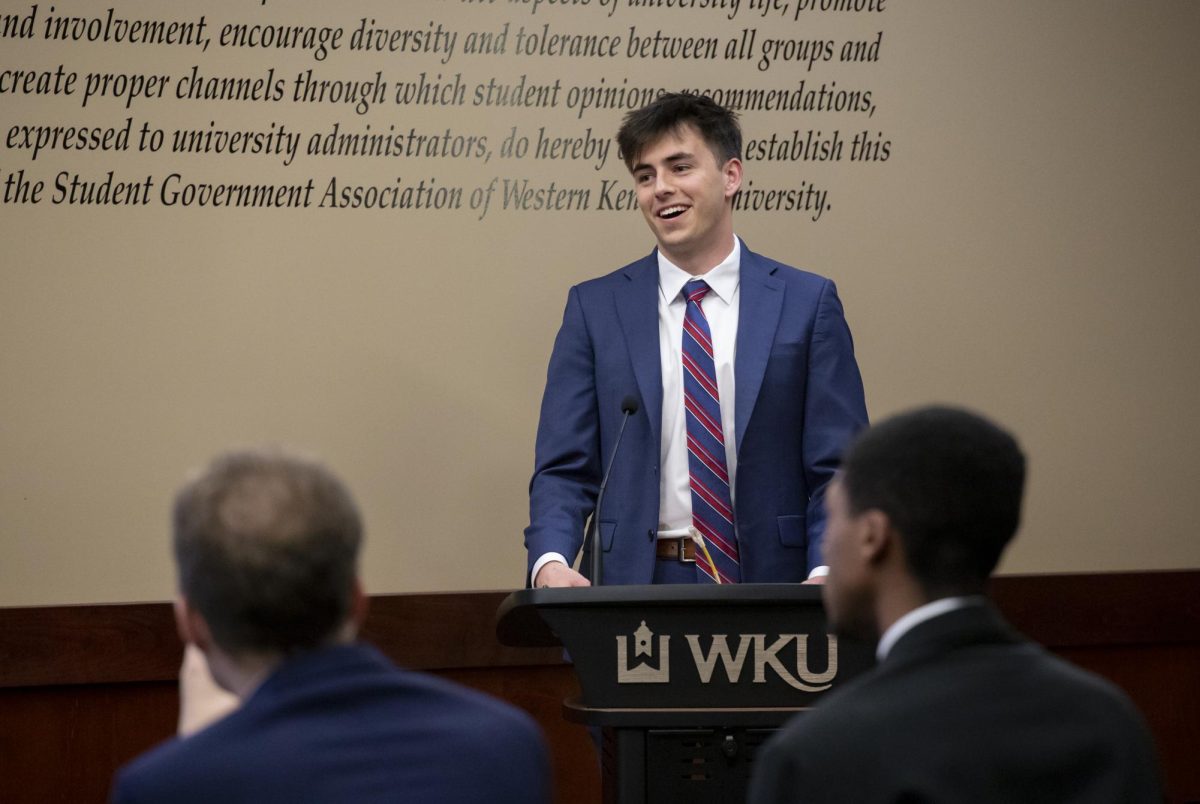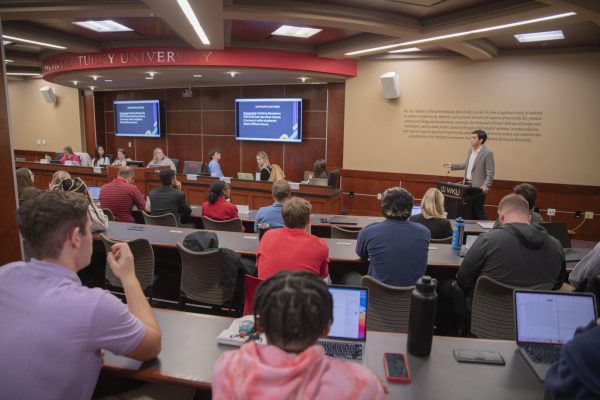University signs research extension with Mammoth Cave
April 21, 2016
WKU and Mammoth Cave National Park held their 11th research symposium on April 18-20 at the national park’s training center.
President Gary Ransdell and Park Superintendent Sarah Craighead signed a research extension that will continue the longstanding relationship the park has with WKU.
Thayer, Mississippi, graduate student in hydrogeology Autumn Turner presented her findings on mussels found in the nearby Green River at this year’s symposium.
“It’s really a wonderland of environments that you can study, and the symposium does a good job of assimilating that work,” Turner said. “It’s not just ecology studies or biology. It’s very inclusive and wide-ranging.”
Turner said she was drawn to the work after talking about the idea with her advisor Chris Groves, professor of hydrogeology at WKU. Groves works closely with the park and also presented research at this year’s symposium. He believes that the partnership between WKU and the park is beneficial for everyone involved.
“It’s a globally important natural laboratory,” Groves said. “It’s a great thing for Western and the park.”
WKU and Mammoth Cave have a long history, according to Groves. Students have been visiting the park since the early 1900s before WKU was fully formed. In some cases, they would walk from Bowling Green to visit and research.
Most of the cooperative efforts between WKU and the national park are coordinated through the Mammoth Cave International Center for Science and Learning. Rick Toomey, the director of the learning center at Mammoth Cave, works with WKU faculty and students to help their research efforts.
“This agreement helps us continue these incredible relationships between the university and the park,” Toomey said.
The learning center is heavily involved in the symposium but also helps researchers obtain permits, find volunteers for research projects, and find locations in the park. The learning center is also responsible for feeding important research findings to the park superintendent, to guides who provide information to visitors, and to the general public.
While the research presented at the symposium wasn’t strictly limited to WKU-affiliated researchers, 17 of the 35 presenters were associated with WKU in some way, according to Toomey.
Ongoing research at Mammoth Cave isn’t limited to geological studies. Topics presented included the current state of birds and amphibians in the park, and these findings were aided by more than 40 years of past research.
“Some researchers are exploring cultural resources as well as the physical resources in the park,” Groves said.
Another five years of research in the park will bring new discoveries and help catalogue the history of both WKU and Mammoth Cave National Park for future students and park visitors to experience.













![Students cheer for Senator at Large Jaden Marshall after being announced as the Intercultural Student Engagement Center Senator for the 24th Senate on Wednesday, April 17 in the Senate Chamber in DSU. Ive done everything in my power, Ive said it 100 times, to be for the students, Marshall said. So, not only to win, but to hear that reaction for me by the other students is just something that shows people actually care about me [and] really support me.](https://wkuherald.com/wp-content/uploads/2024/04/jadenmarshall-1200x844.jpg)


![Students cheer for Senator at Large Jaden Marshall after being announced as the Intercultural Student Engagement Center Senator for the 24th Senate on Wednesday, April 17 in the Senate Chamber in DSU. Ive done everything in my power, Ive said it 100 times, to be for the students, Marshall said. So, not only to win, but to hear that reaction for me by the other students is just something that shows people actually care about me [and] really support me.](https://wkuherald.com/wp-content/uploads/2024/04/jadenmarshall-600x422.jpg)







